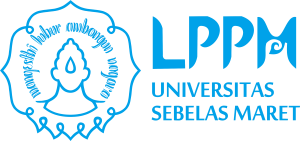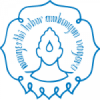Key words: shade, water stress, reserpine, pule pandak, Rauvolfia serpentina
By: Edi Purwanto and Samanhudi
Pule pandak (Rauvolfia serpentina Benth) is a medicinal plant which is has multi-functional but becoming scarce as market demand continues to rise. Therefore, steps are needed to intensify its cultivation in order to increase its secondary metabolite content. One way of increasing the secondary metabolite content is by altering the microclimate. This research aims to discover the effect of different levels of shade and water stress intensity and to find the combination of treatment which has the best effect on the reserpine content of pule pandak. The research was carried out between the period of February and November 2010 in BBP Mondromino, Pokoh, Wonogiri, at an altitude of 141 metres above sea level, consist of two experiments. The research I used a factorial Split Plot Design which consisted of two factors and three replications. The first factor (the main plot) was shade, which consisted of three levels, namely 55 %, 65 %, and 75 % shade density. The second factor (the sub-plot) was the intensity of water stress, which consisted of three levels, namely 100 %, 60 %, and 20 % of field capacity. The research variables observed were plant height, number of leaves, leaf width, root length, root diameter, shoot-root ratio, dry root weight, and reserpine content. The data was analysed using the F test with a 5 % level of significance, and where any significant differences occurred, the data was analysed further using the DUNCAN test at a level of 5 %. The research II also used Split Plot Design arranged in factorial manner consisting of two factors and three replications. The first factor (the main plot) was the shading level consisting of three stages: 55%, 65% and 75%. The second factor (sub compartment) was the water stress period consisting of three stages: 30-60 DAP (day after planting) and 120-150 DAP, 60-90 DAP and 150-180 DAP, 90-120 DAP and 180-210 DAP.
The data was analyzed with F-test at 5% level. if there was significant difference it was followed by Duncan test at 5% level. The results of the research I showed that the same respond of pule pandak observed to the all shade level treated. The reserpine content increased with treatment factors water stress intensity, shade level of 75% and water stress intensity of 20% of field capacity is the combination of treatment factors which had the highest reserpine content of pule pandak. The results of the research II shows that pule pandak has the same effect on the shade treatment, so that the pule pandak in the shade of 55%, 65% and 75% shows the same growth and reserpine content. The 180-210 DAP period results in the highest crown root ratio. The highest reserpine content is found in the shading level of 65%, that is, 2.03% and the water stress period of 120-150 DAP is 2.01%.

